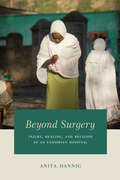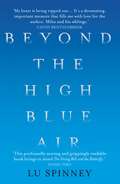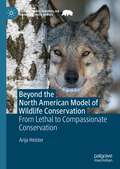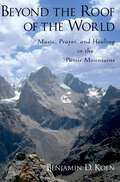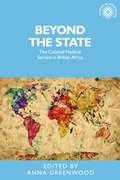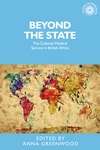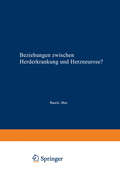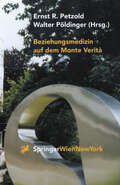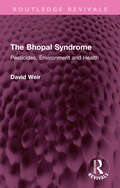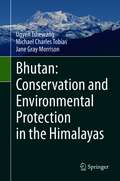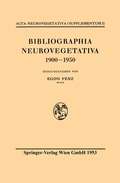- Table View
- List View
Beyond Surgery: Injury, Healing, and Religion at an Ethiopian Hospital
by Anita HannigOver the past few decades, maternal childbirth injuries have become a potent symbol of Western biomedical intervention in Africa, affecting over one million women across the global south. Western-funded hospitals have sprung up, offering surgical sutures that ostensibly allow women who suffer from obstetric fistula to return to their communities in full health. Journalists, NGO staff, celebrities, and some physicians have crafted a stock narrative around this injury, depicting afflicted women as victims of a backward culture who have their fortunes dramatically reversed by Western aid. With Beyond Surgery, medical anthropologist Anita Hannig unsettles this picture for the first time and reveals the complicated truth behind the idea of biomedical intervention as quick-fix salvation. Through her in-depth ethnography of two repair and rehabilitation centers operating in Ethiopia, Hannig takes the reader deep into a world inside hospital walls, where women recount stories of loss and belonging, shame and delight. As she chronicles the lived experiences of fistula patients in clinical treatment, Hannig explores the danger of labeling “culture” the culprit, showing how this common argument ignores the larger problem of insufficient medical access in rural Africa. Beyond Surgery portrays the complex social outcomes of surgery in an effort to deepen our understanding of medical missions in Africa, expose cultural biases, and clear the path toward more effective ways of delivering care to those who need it most.
Beyond Surgery: Injury, Healing, and Religion at an Ethiopian Hospital
by Anita HannigOver the past few decades, maternal childbirth injuries have become a potent symbol of Western biomedical intervention in Africa, affecting over one million women across the global south. Western-funded hospitals have sprung up, offering surgical sutures that ostensibly allow women who suffer from obstetric fistula to return to their communities in full health. Journalists, NGO staff, celebrities, and some physicians have crafted a stock narrative around this injury, depicting afflicted women as victims of a backward culture who have their fortunes dramatically reversed by Western aid. With Beyond Surgery, medical anthropologist Anita Hannig unsettles this picture for the first time and reveals the complicated truth behind the idea of biomedical intervention as quick-fix salvation. Through her in-depth ethnography of two repair and rehabilitation centers operating in Ethiopia, Hannig takes the reader deep into a world inside hospital walls, where women recount stories of loss and belonging, shame and delight. As she chronicles the lived experiences of fistula patients in clinical treatment, Hannig explores the danger of labeling “culture” the culprit, showing how this common argument ignores the larger problem of insufficient medical access in rural Africa. Beyond Surgery portrays the complex social outcomes of surgery in an effort to deepen our understanding of medical missions in Africa, expose cultural biases, and clear the path toward more effective ways of delivering care to those who need it most.
Beyond Surgery: Injury, Healing, and Religion at an Ethiopian Hospital
by Anita HannigOver the past few decades, maternal childbirth injuries have become a potent symbol of Western biomedical intervention in Africa, affecting over one million women across the global south. Western-funded hospitals have sprung up, offering surgical sutures that ostensibly allow women who suffer from obstetric fistula to return to their communities in full health. Journalists, NGO staff, celebrities, and some physicians have crafted a stock narrative around this injury, depicting afflicted women as victims of a backward culture who have their fortunes dramatically reversed by Western aid. With Beyond Surgery, medical anthropologist Anita Hannig unsettles this picture for the first time and reveals the complicated truth behind the idea of biomedical intervention as quick-fix salvation. Through her in-depth ethnography of two repair and rehabilitation centers operating in Ethiopia, Hannig takes the reader deep into a world inside hospital walls, where women recount stories of loss and belonging, shame and delight. As she chronicles the lived experiences of fistula patients in clinical treatment, Hannig explores the danger of labeling “culture” the culprit, showing how this common argument ignores the larger problem of insufficient medical access in rural Africa. Beyond Surgery portrays the complex social outcomes of surgery in an effort to deepen our understanding of medical missions in Africa, expose cultural biases, and clear the path toward more effective ways of delivering care to those who need it most.
Beyond Technonationalism: Biomedical Innovation and Entrepreneurship in Asia (Innovation and Technology in the World Economy)
by Kathryn C. Ibata-ArensThe biomedical industry, which includes biopharmaceuticals, genomics and stem cell therapies, and medical devices, is among the fastest growing worldwide. While it has been an economic development target of many national governments, Asia is currently on track to reach the epicenter of this growth. What accounts for the rapid and sustained economic growth of biomedicals in Asia? To answer this question, Kathryn Ibata-Arens integrates global and national data with original fieldwork to present a conceptual framework that considers how national governments have managed key factors, like innovative capacity, government policy, and firm-level strategies. Taking China, India, Japan, and Singapore in turn, she compares each country's underlying competitive advantages. What emerges is an argument that countries pursuing networked technonationalism (NTN) effectively upgrade their capacity for innovation and encourage entrepreneurial activity in targeted industries. In contrast to countries that engage in classic technonationalism—like Japan's developmental state approach—networked technonationalists are global minded to outside markets, while remaining nationalistic within the domestic economy. By bringing together aggregate data at the global and national level with original fieldwork and drawing on rich cases, Ibata-Arens telegraphs implications for innovation policy and entrepreneurship strategy in Asia—and beyond.
Beyond the Body: Death and Social Identity
by Elizabeth Hallam Jenny Hockey Glennys HowarthBeyond the Body presents a new and sophisticated approach to death, dying and bereavement, and the sociology of the body. The authors challenge existing theories that put the body at the centre of identity. They go 'beyond the body' to highlight the persistence of self-identity even when the body itself has been disposed of or is missing. Chapters draw together a wide range of empirical data, including cross-cultural case studies and fieldwork to examine both the management of the corpse and the construction of the 'soul' or 'spirit' by focusing on the work of: *undertakers *embalmers *coroners *clergy *clairvoyants *exorcists *bereavement counsellors.
Beyond the Body: Death and Social Identity
by Elizabeth Hallam Jenny Hockey Glennys HowarthBeyond the Body presents a new and sophisticated approach to death, dying and bereavement, and the sociology of the body. The authors challenge existing theories that put the body at the centre of identity. They go 'beyond the body' to highlight the persistence of self-identity even when the body itself has been disposed of or is missing. Chapters draw together a wide range of empirical data, including cross-cultural case studies and fieldwork to examine both the management of the corpse and the construction of the 'soul' or 'spirit' by focusing on the work of: *undertakers *embalmers *coroners *clergy *clairvoyants *exorcists *bereavement counsellors.
Beyond the Bones: Engaging with Disparate Datasets
by Madeleine L. Mant Alyson Jaagumägi HollandInterdisciplinary research is a rewarding enterprise, but there are inherent challenges, especially in current anthropological study. Anthropologists investigate questions concerning health, disease, and the life course in past and contemporary societies, necessitating interdisciplinary collaboration. Tackling these ‘big picture’ questions related to human health-states requires understanding and integrating social, historical, environmental, and biological contexts and uniting qualitative and quantitative data from divergent sources and technologies. The crucial interplay between new technologies and traditional approaches to anthropology necessitates innovative approaches that promote the emergence of new and alternate views. Beyond the Bones: Engaging with Disparate Datasets fills an emerging niche, providing a forum in which anthropology students and scholars wrestle with the fundamental possibilities and limitations in uniting multiple lines of evidence. This text demonstrates the importance of a multi-faceted approach to research design and data collection and provides concrete examples of research questions, designs, and results that are produced through the integration of different methods, providing guidance for future researchers and fostering the creation of constructive discourse. Contributions from various experts in the field highlight lines of evidence as varied as skeletal remains, cemetery reports, hospital records, digital radiographs, ancient DNA, clinical datasets, linguistic models, and nutritional interviews, including discussions of the problems, limitations, and benefits of drawing upon and comparing datasets, while illuminating the many ways in which anthropologists are using multiple data sources to unravel larger conceptual questions in anthropology.Examines how disparate datasets are combined using case studies from current research.Draws on multiple sub-disciplines of anthropological research to produce a holistic overview that speaks to anthropology as a discipline.Explores examples drawn from qualitative, quantitative, and mixed methods research to illustrate the breadth of anthropological work.
Beyond the Brain: How Body and Environment Shape Animal and Human Minds
by Louise BarrettWhen a chimpanzee stockpiles rocks as weapons or when a frog sends out mating calls, we might easily assume these animals know their own motivations--that they use the same psychological mechanisms that we do. But as Beyond the Brain indicates, this is a dangerous assumption because animals have different evolutionary trajectories, ecological niches, and physical attributes. How do these differences influence animal thinking and behavior? Removing our human-centered spectacles, Louise Barrett investigates the mind and brain and offers an alternative approach for understanding animal and human cognition. Drawing on examples from animal behavior, comparative psychology, robotics, artificial life, developmental psychology, and cognitive science, Barrett provides remarkable new insights into how animals and humans depend on their bodies and environment--not just their brains--to behave intelligently. Barrett begins with an overview of human cognitive adaptations and how these color our views of other species, brains, and minds. Considering when it is worth having a big brain--or indeed having a brain at all--she investigates exactly what brains are good at. Showing that the brain's evolutionary function guides action in the world, she looks at how physical structure contributes to cognitive processes, and she demonstrates how these processes employ materials and resources in specific environments. Arguing that thinking and behavior constitute a property of the whole organism, not just the brain, Beyond the Brain illustrates how the body, brain, and cognition are tied to the wider world.
Beyond the Brain: How Body and Environment Shape Animal and Human Minds (PDF)
by Louise BarrettWhen a chimpanzee stockpiles rocks as weapons or when a frog sends out mating calls, we might easily assume these animals know their own motivations--that they use the same psychological mechanisms that we do. But as Beyond the Brain indicates, this is a dangerous assumption because animals have different evolutionary trajectories, ecological niches, and physical attributes. How do these differences influence animal thinking and behavior? Removing our human-centered spectacles, Louise Barrett investigates the mind and brain and offers an alternative approach for understanding animal and human cognition. Drawing on examples from animal behavior, comparative psychology, robotics, artificial life, developmental psychology, and cognitive science, Barrett provides remarkable new insights into how animals and humans depend on their bodies and environment--not just their brains--to behave intelligently. Barrett begins with an overview of human cognitive adaptations and how these color our views of other species, brains, and minds. Considering when it is worth having a big brain--or indeed having a brain at all--she investigates exactly what brains are good at. Showing that the brain's evolutionary function guides action in the world, she looks at how physical structure contributes to cognitive processes, and she demonstrates how these processes employ materials and resources in specific environments. Arguing that thinking and behavior constitute a property of the whole organism, not just the brain, Beyond the Brain illustrates how the body, brain, and cognition are tied to the wider world.
Beyond the Checklist: What Else Health Care Can Learn from Aviation Teamwork and Safety (The Culture and Politics of Health Care Work)
by Suzanne Gordon Patrick Mendenhall Bonnie Blair O'tooleThe U.S. healthcare system is now spending many millions of dollars to improve "patient safety" and "inter-professional practice." Nevertheless, an estimated 100,000 patients still succumb to preventable medical errors or infections every year. How can health care providers reduce the terrible financial and human toll of medical errors and injuries that harm rather than heal? Beyond the Checklist argues that lives could be saved and patient care enhanced by adapting the relevant lessons of aviation safety and teamwork. In response to a series of human-error caused crashes, the airline industry developed the system of job training and information sharing known as Crew Resource Management (CRM). Under the new industry-wide system of CRM, pilots, flight attendants, and ground crews now communicate and cooperate in ways that have greatly reduced the hazards of commercial air travel.The coauthors of this book sought out the aviation professionals who made this transformation possible. Beyond the Checklist gives us an inside look at CRM training and shows how airline staff interaction that once suffered from the same dysfunction that too often undermines real teamwork in health care today has dramatically improved. Drawing on the experience of doctors, nurses, medical educators, and administrators, Beyond the Checklist demonstrates how CRM can be adapted, more widely and effectively, to health care delivery. The authors provide case studies of three institutions that have successfully incorporated CRM-like principles into the fabric of their clinical culture by embracing practices that promote common patient safety knowledge and skills.The coauthors infuse this study with their own diverse experience and collaborative spirit: Patrick Mendenhall is a commercial airline pilot who teaches CRM; Suzanne Gordon is a nationally known health care journalist, training consultant, and speaker on issues related to nursing; and Bonnie Blair O’Connor is an ethnographer and medical educator who has spent more than two decades observing medical training and teamwork from the inside.
Beyond the High Blue Air: A Memoir
by Lu SpinneyAged 29, Lu Spinney's son Miles suffered a devastating head injury and was left in a coma. With unflinching honesty, Lu Spinney has written a passionate, urgent account of the years following her son Miles's accident, revealing his existence imprisoned in a limbo of fluctuating consciousness, at times agonizingly aware of his predicament. With unfailing honesty and courageous prose, Lu Spinney's memoir explores the very nature of self and the anguish of witnessing Miles's suffering as she and her family come to realise that, although he has been saved from death, he has not been brought back to a meaningful life.
Beyond the North American Model of Wildlife Conservation: From Lethal to Compassionate Conservation (The Palgrave Macmillan Animal Ethics Series)
by Anja HeisterThe North American Wildlife Conservation Model (NAM) is the driver of a strong anthropocentric stance, which has legalized an ongoing, annual exploitation of hundreds of millions of wild animals, who are killed in the United States through trapping, hunting and other lethal practices. Increasingly, the American public opposes the killing of wild animals for recreation, trophies and profit but has little—if any—knowledge of the Model. The purpose of this book is to empower the public with knowledge about the NAM’s insufficiencies and to help expedite the shift from lethal to compassionate conservation, an endeavour urgently needed particularly under the threats of climate change, human population growth and accelerating plant and animal species extinctions.With a focus on trapping, this book exposes the NAM's belief in human supremacy and its consequences for wild animals and their ecosystems, the same value that is driving the ongoing global destruction of nature and accelerating species extinction. Motivated by a deep concern for wild animals who suffer and whose lives are extinguished each year by 'sportsmen and women', this book exposes the violent treatment of wild animals inherent in governmental-promoted hunting and trapping programs, while emphasizing the importance of empathy and compassion for other animals in conservation and in our lives.
Beyond the Roof of the World: Music, Prayer, and Healing in the Pamir Mountains
by Benjamin D. KoenWhile Western medicine has conventionally separated music, science, and religion into distinct entities, traditional cultures throughout the world have always viewed music as a bridge that connects the physical with the spiritual. Now, as people in even the most technologically advanced nations across the globe struggle with obtaining affordable and reliable healthcare coverage, more and more people are turning to these ancient cultural practices of ICAM healing (integrative, complementary, and alternative medicine). With Beyond the Roof of the World, Dr. Benjamin D. Koen unearths the Western separation of healing from spiritual and musical practices as a culturally determined phenomenon, and proves the relevance of medical ethnomusicology in light of the globally spreading ICAM healing practices. Using the culture found within the towering Pamir Mountains of Badakhshan Tajikistan, in a place poetically known as the Roof of the World, as the paradigm of ICAM healing, Koen shows spirituality and musicality to be intimately intertwined with one's physical life, health and healing. For the first time, Koen bridges the widespread gap between ethnomusicology and music therapy. Koen's extensive research and emersion into the Badakhstan culture provides the reader with an "insider" perspective while maintaining an "observer's" view, as he infuses the text with relevant scholarship.
Beyond the Roof of the World: Music, Prayer, and Healing in the Pamir Mountains
by Benjamin D. KoenWhile Western medicine has conventionally separated music, science, and religion into distinct entities, traditional cultures throughout the world have always viewed music as a bridge that connects the physical with the spiritual. Now, as people in even the most technologically advanced nations across the globe struggle with obtaining affordable and reliable healthcare coverage, more and more people are turning to these ancient cultural practices of ICAM healing (integrative, complementary, and alternative medicine). With Beyond the Roof of the World, Dr. Benjamin D. Koen unearths the Western separation of healing from spiritual and musical practices as a culturally determined phenomenon, and proves the relevance of medical ethnomusicology in light of the globally spreading ICAM healing practices. Using the culture found within the towering Pamir Mountains of Badakhshan Tajikistan, in a place poetically known as the Roof of the World, as the paradigm of ICAM healing, Koen shows spirituality and musicality to be intimately intertwined with one's physical life, health and healing. For the first time, Koen bridges the widespread gap between ethnomusicology and music therapy. Koen's extensive research and emersion into the Badakhstan culture provides the reader with an "insider" perspective while maintaining an "observer's" view, as he infuses the text with relevant scholarship.
Beyond the state: The colonial medical service in British Africa
by Anna GreenwoodThe Colonial Medical Service was the personnel section of the Colonial Service, employing the doctors who tended to the health of both the colonial staff and the local populations of the British Empire. Although the Service represented the pinnacle of an elite government agency, its reach in practice stretched far beyond the state, with the members of the African service collaborating, formally and informally, with a range of other non-governmental groups. This collection of essays on the Colonial Medical Service of Africa illustrates the diversity and active collaborations to be found in the untidy reality of government medical provision. The authors present important case studies covering former British colonial dependencies in Africa, including Kenya, Malawi, Nigeria, Tanzania, Uganda and Zanzibar. They reveal many new insights into the enactments of colonial policy and the ways in which colonial doctors negotiated the day-to-day reality during the height of imperial rule in Africa. The book provides essential reading for scholars and students of colonial history, medical history and colonial administration.
Beyond the state: The colonial medical service in British Africa (PDF)
by Anna GreenwoodThe Colonial Medical Service was the personnel section of the Colonial Service, employing the doctors who tended to the health of both the colonial staff and the local populations of the British Empire. Although the Service represented the pinnacle of an elite government agency, its reach in practice stretched far beyond the state, with the members of the African service collaborating, formally and informally, with a range of other non-governmental groups. This collection of essays on the Colonial Medical Service of Africa illustrates the diversity and active collaborations to be found in the untidy reality of government medical provision. The authors present important case studies covering former British colonial dependencies in Africa, including Kenya, Malawi, Nigeria, Tanzania, Uganda and Zanzibar. They reveal many new insights into the enactments of colonial policy and the ways in which colonial doctors negotiated the day-to-day reality during the height of imperial rule in Africa. The book provides essential reading for scholars and students of colonial history, medical history and colonial administration.
Beyond the Tape: The Life and Many Deaths of a State Pathologist
by Marie CassidyIn 1997, Dr Marie Cassidy arrived in Dublin from Glasgow. There to discuss a possible deputy state pathologist post with Professor John Harbison, instead she was whisked by police escort to a Grangegorman murder scene. There was no turning back.She became Ireland's State Pathologist from 2004 until 2018, her image synonymous with breaking news of high-profile cases - a trusted figure in turbulent times.Here, with the scalpel-like precision and calm authority of her trade, Marie shares her remarkable personal journey from working-class Scotland into the world of forensic pathology, describing in candid detail the intricate processes central to solving modern crime.She recounts her work following the tragic deaths of Rachel O'Reilly, Siobhan Kearney, Robert Holohan, Tom O'Gorman and others - along with the Stardust exhumations and lesser known cases from her long career - outlining the subtle methods by which pathology and the justice system meet.Beyond the Tape is a unique behind-the-scenes journey into the mysteries of unexplained and sudden death - by turns poignant, stark and deeply compelling.
Beziehungen zwischen Herderkrankung und Herzneurose?
by Max BaachDieser Buchtitel ist Teil des Digitalisierungsprojekts Springer Book Archives mit Publikationen, die seit den Anfängen des Verlags von 1842 erschienen sind. Der Verlag stellt mit diesem Archiv Quellen für die historische wie auch die disziplingeschichtliche Forschung zur Verfügung, die jeweils im historischen Kontext betrachtet werden müssen. Dieser Titel erschien in der Zeit vor 1945 und wird daher in seiner zeittypischen politisch-ideologischen Ausrichtung vom Verlag nicht beworben.
Beziehungsgestaltung in der Pflege von Menschen mit Demenz: Praxisleitfaden zum Expertenstandard
by Bernhard LangnerGemeinsam das Leben leben!Dieses Buch richtet sich an Praktiker und Führungspersonen aus dem Pflegebereich und bietet alle wichtigen Aspekte für die erfolgreiche Umsetzung des neuen Expertenstandards „Beziehungsgestaltung in der Pflege von Menschen mit Demenz“. Der erfahrene Autor beginnt mit der Frage, was Beziehung im Kontext des Standards überhaupt bedeutet und stellt dabei die Haltung der Einrichtung gegenüber den Betroffenen dar. Wie kann man Haltung und Wohlbefinden erfragen und bemessen? Wie lassen sich die Kriterien des Standards praktisch umsetzen? Hier finden Sie erprobte Ideen mit denen Sie die Hürden und Herausforderung bei der Umsetzung des Expertenstandards meistern.So verbessern Sie den Umgang miteinander in Ihrer Einrichtung und fördern das Wohlbefinden Ihrer Klienten.
Beziehungsmedizin auf dem Monte Verità: 30 Jahre Psychosomatik in Ascona
by Ernst R. Petzold Walter Pöldinger"Frech denken und vorsichtig handeln" hat Boris Luban-Plozza, einer der Pioniere für Psychosomatik im deutschen Sprachraum, immer wieder den Studenten eingeschärft, die auf den Monte Verità – den Berg der Wahrheit – kamen, um in Balint-Gruppen, die Beziehungsmedizin zusammen mit Professoren und Ärzten zu erleben. Fallweise wurden diese Modellgruppen durch Patienten und ihre Angehörigen ergänzt. Für Lehrzwecke wurden diese sogenannten Monte Verità-Gruppen filmisch festgehalten und stellen einen Teil des Ascona-Modells – eine Bezeichnung der WHO – dar. Dank der internationalen Stiftung "Psychosomatik und Sozialmedizin" in Ascona werden seit Jahren Preise für Medizinstudenten und Mitglieder des Pflegepersonals verliehen. Ausgezeichnet werden die besten Schilderungen von Beziehungserlebnissen mit Patienten. Von den begleitenden Vorträgen bekannter Experten, findet sich in dem Buch ein Vortrag von Erich Fromm: "Das Unsagbare, das Unaussprechliche und das Undenkbare". Ein Bericht über erste Balint-Gruppen in China zeigt ebenso wie die Liste der Preisträger die internationale Ausstrahlung des Geschehens auf dem Monte Verità – einem der wichtigsten Zentren für die Entwicklung der Psychosomatik.
Bezugspflege
by Hans-Joachim Schlettig Ursula von HeideAnregungen zum Nachmachen werden Sie in diesem Buch finden, das das Konzept der patientenbezogenen Pflege umfassend und praxisbezogen beschreibt.
The Bhopal Syndrome: Pesticides, Environment and Health (Routledge Revivals)
by David WeirFirst published in 1988, The Bhopal Syndrome documents one of world’s worst industrial disaster: The Bhopal gas tragedy of 1984. The tragedy exposed a variety of issues plaguing rapid development such as the negligence of corporations and government, prioritizing of commercial benefits over human lives, inadequate post-disaster rehabilitation and compensation, and frightening levels of environmental pollution. The author argues that the Bhopal gas tragedy is being replicated across the globe at various intensities facilitating a dangerous normalisation. He asserts that workers and consumers should fight for their ‘right to know’ about working conditions, chemicals used in pesticides, the harm caused by producing such chemicals, how these chemicals end up on our food as well as the manner in which the chemicals interact in our body. Climate crisis and undeterred industrial development still haunt our reality making this book an essential read for any concerned citizen and for students of disaster management, industrial disasters, climate change, environment, toxicology and workers’ rights.
The Bhopal Syndrome: Pesticides, Environment and Health (Routledge Revivals)
by David WeirFirst published in 1988, The Bhopal Syndrome documents one of world’s worst industrial disaster: The Bhopal gas tragedy of 1984. The tragedy exposed a variety of issues plaguing rapid development such as the negligence of corporations and government, prioritizing of commercial benefits over human lives, inadequate post-disaster rehabilitation and compensation, and frightening levels of environmental pollution. The author argues that the Bhopal gas tragedy is being replicated across the globe at various intensities facilitating a dangerous normalisation. He asserts that workers and consumers should fight for their ‘right to know’ about working conditions, chemicals used in pesticides, the harm caused by producing such chemicals, how these chemicals end up on our food as well as the manner in which the chemicals interact in our body. Climate crisis and undeterred industrial development still haunt our reality making this book an essential read for any concerned citizen and for students of disaster management, industrial disasters, climate change, environment, toxicology and workers’ rights.
Bhutan: Conservation and Environmental Protection in the Himalayas
by Ugyen Tshewang Michael Charles Tobias Jane Gray MorrisonLocated in the heart of the Eastern Himalayas, Bhutan practices the philosophy of Gross National Happiness (“GNH”) that embraces environmental conservation as one of the main building blocks for its sustainable development goals. Bhutan’s conservation strategies and success are largely driven by the strong political will and visionary leadership of His Majesty the King of Bhutan The nation’s Buddhist perspectives regarding a deep and abiding respect for nature; and the strategic enforcement of a wide-ranging stringent set of internal regulations and controls have helped ensure ecological gold standards in Bhutan. Moreover, the country is an active member of the international conservation community by fulfilling its implementation of various Multilateral Environment Agreements. While it emerged into the 21st century as one of the 36 global terrestrial “hotspots” in biological diversity conservation ranks, Bhutan’s sheer commitment with more than 51% of its territory being managed under the explicit status of a protected area network, and more than 70% of the land under forest cover, represents Bhutan’s exemplary dedication to protect the planet despite its smallness in size and economy, and the biological fragility exemplified by its hotspot situation. In the face of imminent severe threats of global warming, Bhutan nonetheless exemplifies the truth that “a small country with a big conservation commitment” can make an enormous contribution to the global community.At the regional level, Bhutan is intent upon protecting the Water Towers of Asia (that glacial expanse of the Himalayas) which is a critical resource bulwark for about one-fifth of the global population downstream in South Asia. Such protections invariably help mitigate climate change by acting as a nation-wide carbon sink through its carbon neutral policies. In short, Bhutan has long represented one of the world’s foremost national guardians of biodiversity conservation, ecological good governance, and societal sustainability at a period when the world has entered the Anthropocene – an epoch of mass extinctions.We envision this publication to be ecologically and ethically provocative and revealing for the concerned scientific communities, and governments. Through an extensive review of the scientific and anthropological literature, as well as the research team's own data, the Author's have set forth timely recommendations for conservation policies, strategies and actions. This book provides technical and deeply considered assessments of the state of Bhutan’s environment, its multiple, human-induced stressors and pressures; as well as extremely sound, practical techniques that would address conservation strategies in the Himalayas and, by implication, worldwide.
